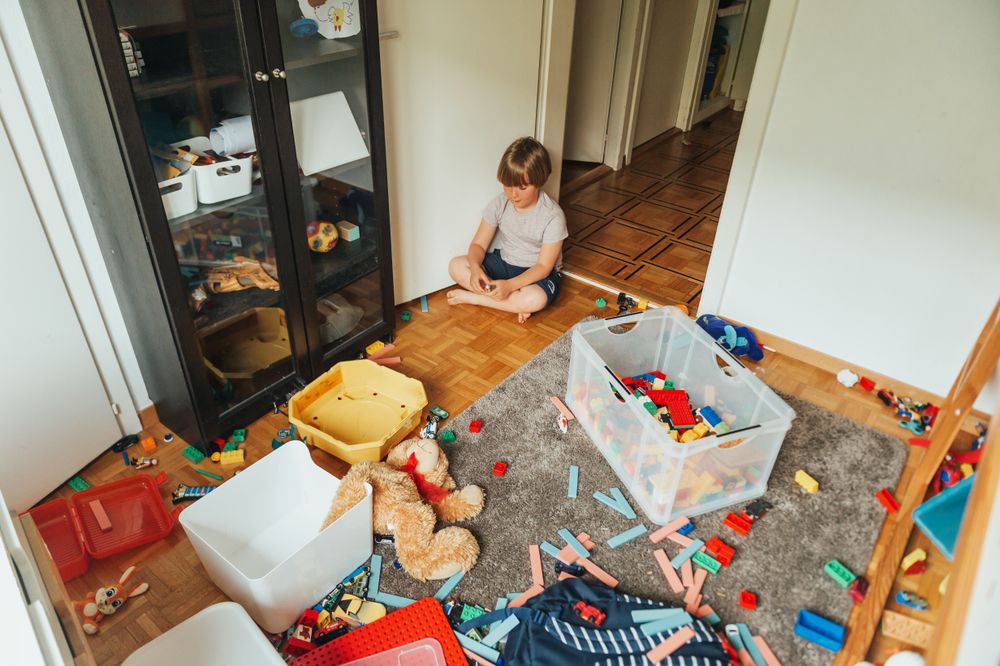Attention Deficit Hyperactivity Disorder (ADHD) is one of the most common neurodevelopmental conditions in children, affecting their ability to focus, regulate emotions, and manage impulsive behavior. For parents navigating the challenges of raising a child with ADHD, finding effective support strategies can feel overwhelming. While many people associate ADHD management with medication or behavioral therapy, occupational therapy (OT) plays a vital and often overlooked role in helping children with ADHD thrive.
This blog from Milk & Milestones Therapy in New Jersey explores how occupational therapy focuses on empowering children to develop the skills they need to participate in daily activities, including school, social interactions, and self-care. For children with ADHD, OT offers practical, individualized strategies to address attention difficulties, hyperactivity, and executive functioning challenges in a compassionate and supportive environment.
Understanding ADHD in Children
ADHD is characterized by persistent patterns of inattention, hyperactivity, and impulsivity that interfere with a child’s functioning in various areas of life. While symptoms and their severity vary, common challenges for children with ADHD include:
- Difficulty Focusing: Struggling to pay attention, follow instructions, or complete tasks.
- Impulsivity: Acting without thinking, interrupting conversations, or displaying risky behavior.
- Hyperactivity: An inability to sit still, fidgeting, or excessive physical activity.
- Executive Functioning Issues: Challenges with planning, organizing, managing time, and self-regulating emotions.
These symptoms can affect academic performance, social relationships, and self-esteem, leading to frustration for both children and their families. Occupational therapy provides targeted interventions to help children overcome these obstacles and build critical life skills.
How Occupational Therapy Supports Children with ADHD
Occupational therapists (OTs) specialize in helping individuals develop the skills they need to succeed in daily life. For children with ADHD, OT focuses on improving attention, emotional regulation, motor skills, and adaptive strategies to better navigate their environment. Here’s how occupational therapy can make a difference:
1. Enhancing Executive Functioning Skills
Executive functioning involves the mental processes that help children plan, organize, and complete tasks. ADHD often disrupts these processes, making it difficult for children to manage schoolwork, follow multi-step instructions, or stay on schedule. OTs work with children to:
- Develop Routines: Creating structured daily routines to reduce chaos and improve time management.
- Use Visual Supports: Charts, checklists, or visual schedules help children break tasks into manageable steps.
- Teach Prioritization: Helping children identify which tasks are most important and how to sequence them effectively.
These strategies build organizational skills and promote independence, especially in school settings.
2. Improving Attention and Focus
Children with ADHD often struggle with maintaining attention in structured environments like classrooms. Occupational therapists use engaging, play-based activities to strengthen attention spans and teach self-monitoring techniques. Examples include:
- Mindfulness Exercises: Breathing techniques, yoga, or guided relaxation help children calm their minds and stay present.
- Interactive Games: Games that require turn-taking or sustained attention, such as puzzles or memory challenges, can improve focus in a fun way.
- Environmental Adjustments: Modifying a child’s environment, such as using noise-canceling headphones or organizing workspaces to reduce distractions, supports better attention.
3. Supporting Emotional Regulation
Children with ADHD often experience intense emotions and may struggle to manage frustration, anger, or excitement. Occupational therapists teach strategies for recognizing and managing emotions, such as:
- Emotional Identification: Helping children name their feelings and understand triggers.
- Calming Techniques: Using sensory tools like stress balls, weighted blankets, or fidget toys to self-soothe.
- Role-Playing Scenarios: Practicing appropriate responses to challenging situations, like disagreements with peers or handling disappointment.
Improved emotional regulation fosters better relationships and reduces behavioral disruptions.
4. Addressing Sensory Processing Challenges
Many children with ADHD experience sensory sensitivities, making them more reactive to sounds, textures, or visual stimuli. Occupational therapy incorporates sensory integration techniques to help children process and respond to sensory input in a more balanced way. Examples include:
- Sensory Diets: A customized plan of sensory activities, such as swinging, jumping, or tactile exploration, to meet the child’s sensory needs.
- Adaptive Tools: Providing tools like wobble cushions or fidget devices to help children channel energy productively.
- Gradual Exposure: Encouraging tolerance to sensory input through controlled and supportive exposure.
These interventions help children feel more comfortable in their environments, enhancing focus and participation.
5. Promoting Motor Skills Development
Although not all children with ADHD have motor skill challenges, some experience difficulties with fine or gross motor skills, such as handwriting, coordination, or balance. Occupational therapists address these challenges by:
- Strengthening Handwriting Skills: Using exercises to improve grip, hand strength, and letter formation.
- Building Coordination: Activities like obstacle courses, ball games, or climbing exercises enhance coordination and balance.
- Improving Self-Care: Practicing skills like dressing, tying shoelaces, or using utensils to promote independence.
By supporting motor development, OTs help children gain confidence in everyday activities.
What to Expect from Occupational Therapy for ADHD
Occupational therapy is highly individualized, with treatment plans tailored to each child’s unique strengths and challenges. Here’s what parents can typically expect:
Assessment and Goal Setting
The therapist will begin by evaluating your child’s needs through observation, interviews, and standardized tests. Together, you’ll set specific, measurable goals, such as improving attention during homework or managing transitions between activities.
Therapy Sessions
Therapy sessions are often play-based and designed to be engaging for children. Activities might include sensory play, fine motor skill exercises, or games that teach attention and self-regulation.
Parent Involvement
Parents are an integral part of the therapy process. The therapist will provide you with strategies, tools, and activities to reinforce progress at home, such as creating a visual schedule or introducing sensory breaks during homework.
Collaboration with Schools
OTs often work with teachers and school staff to implement strategies in the classroom, ensuring consistency across environments. This might include seating arrangements, task modifications, or movement breaks during lessons.
Tips for Parents Supporting a Child with ADHD
- Be Patient: Progress takes time, and every small step forward is worth celebrating.
- Create Structure: Establish clear routines and expectations to help your child feel secure.
- Encourage Movement: Physical activity can help regulate energy levels and improve focus.
- Practice Positive Reinforcement: Praise your child’s efforts and successes to build their confidence.
- Stay Involved: Work closely with your child’s occupational therapist to implement strategies consistently.
Empowering Children with ADHD
Occupational therapy goes beyond managing symptoms; it empowers children with ADHD to participate fully in their lives. By addressing challenges in attention, emotional regulation, sensory processing, and motor skills, OT helps children build the tools they need to succeed at home, in school, and in their social lives.
As a parent, your support and involvement are key to your child’s success. By partnering with an occupational therapist, you’re not only helping your child overcome challenges but also fostering their independence, resilience, and self-esteem.
If you’re considering occupational therapy for your child, Milk & Milestones Therapy is ready to discuss how we can tailor our approach to meet your child’s needs. With the right support, children with ADHD can thrive and achieve their full potential. To schedule a consultation, call 201-401-0702 today.




